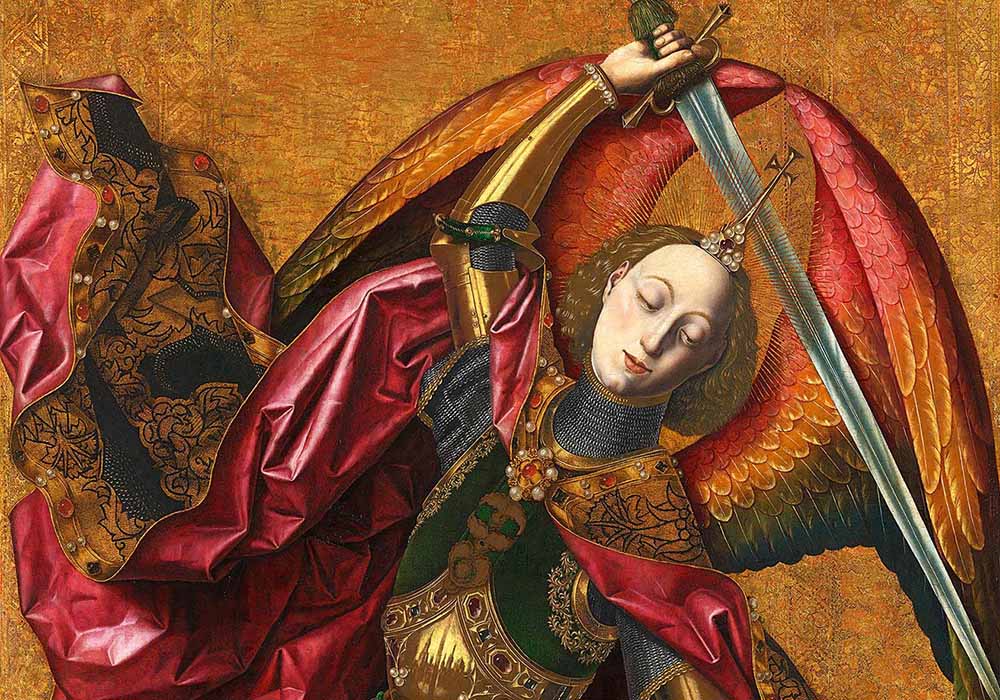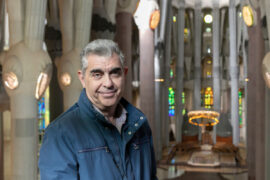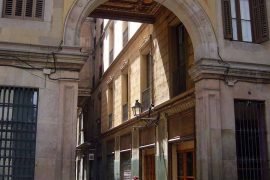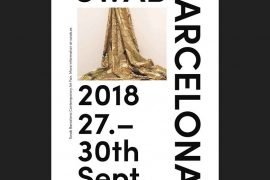A majestic angel receives the spectator with spread wings, brandishing his sword. His calm and androgynous gaze attacks the demon to his feet, before the edge of his weapon does. Its shining armour, crowned by iridescent wings and wrapped in a pink cloak of floating folds, contrasts with the sobriety of its gesture. The celestial Jerusalem appears in the lower part of its gleaming plastron. The struggle of the archangel Saint Michael not only represents the eternal battle between good and evil, light and darkness, in Christian theology; it is also the symbolic embodiment and representation of the celestial cavalry whose ultimate vocation is the search for God. Beyond theological issues, Bermejo manages to challenge the modern spectator with a spectacular composition, yes, but whose theme is deeply present in the life of every human being: the struggle to conquer the so-called “low” passions that agitate us.
This Saint Michael triumphant over the devil with the donor Antoni Joan (1468) is a paradigmatic example of both the technical expertise and the iconographic genius of the Cordovan painter. If we observe carefully the demon at the feet of the archangel, we will realize that the infernal creature also dresses a golden armour exquisitely made, like that of Saint Michael, albeit with the disturbing form of a reptilian face. While the archangel’s armour reflects the celestial Jerusalem, that of the devil represents a deformed bestiality. Bermejo thus expresses the fundamental duplicity of the human being, capable of the best and the worst, since, as the philosopher Blaise Pascal affirmed, man is halfway between the angel and the beast. Not in vain the donor begs -he is praying- witnessing the combat between both forces; a combat that is not external, but that is fought continuously in his own interior. This is just one of the artist’s pictorial and iconographic genius, which stands out both in the magnificent scenes and in those of great simplicity.
Both the chromatic richness of his works and the brilliant detail of fauna and flora invite the visitor to maintain a state of sustained contemplation.
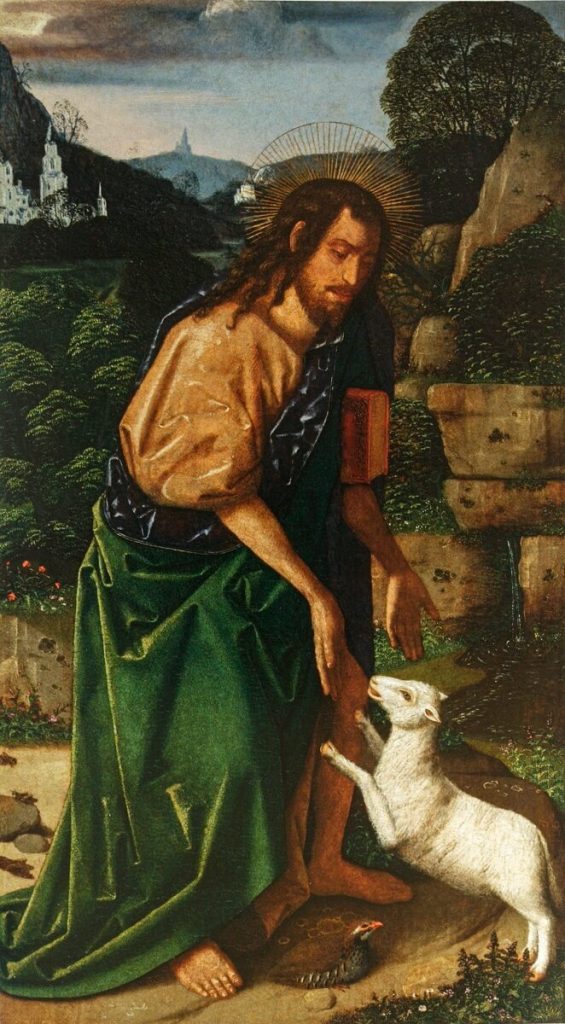
In that sense, we can contemplate his magnificent John the Baptist in the Desert (1470), which bows with respect and compassion in front of a lamb that is addressed to him with a canine attitude, although it is a symbolic representation of the Lamb of God, the prefiguration of the coming of Jesus. As in all Bermejo’s works, the sacred and the human are inseparably linked. This work stands out for the tender bond between the lamb and the wild prophet who, barefoot, shows a great simplicity and love for nature and his creatures that, like the bird at his feet, show their deep communion with it.
Both the inenarrable chromatic richness of his works and the brilliant detail of the fauna and flora invite the visitor to maintain a state of sustained contemplation before each of the compositions. The case of the Desplà Pietà (1490) -whose iconographic program was conceived with the humanist of that surname- is especially paradigmatic in that sense. In this work has been identified some seventy species of fauna and flora represented with complete accuracy, which shows the masterful ability of observation and recreation of nature by Bermejo. The following video explores some of these amazing details, in which the faithful representation and fabulation go hand in hand:
This is the case of the humanized face of the lion that appears in the lower left margin of the Desplà Pietà and on whose forehead an insect rests: his anguished face laments the death of Christ. In addition to these fanciful details, we can appreciate the incredible realism of the physiognomies shown, for example, in the The flagellation of Saint Engratia (1472-1477), in which the facial imperfections of the characters denote a marked representational level, or in the nude bodies of the Descent of Christ to the Limbo (c. 1475), in which a majestic Christ wears transparent veils that reveal his sex, certainly a risky iconographic challenge. This Dante-like scene, filled with demons, shows -in the upper left margin- a brooding and melancholy demon who observes the scene with distance while the flames burn at his feet. Reflective fallen angel, ambiguous and dubious image of our humanity that expresses the eternal questions about our becoming and seems to announce Rodin’s The Thinker. With the same originality and creative force that the great masters of all times -like the mystic, poet and English artist William Blake– Bermejo manages to create, in a masterly way, an enduring interrogation on our condition, a true marriage between Heaven and the Hell.

